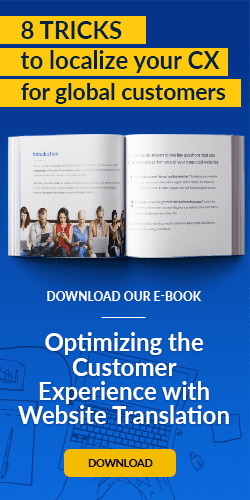Editor’s Note: This is Part 2 in a 2-part series. Read Part 1 here.
Yesterday, we examined several key European and Asian markets, and provided interesting anecdotes about their consumers’ online buying habits, preferred payment methods, and more.
Today, we head westward and explore two more compelling online consumer personas—those of U.S. Hispanics and Latin Americans.
U.S. Hispanic Online Consumers
The U.S. Hispanic market represents about 17% of the U.S. population. While cities in California, Florida and Texas often have large Hispanic communities, these consumers live throughout the States, and have disparate cultural backgrounds.
Put another way: Don’t assume a “one size fits all” Hispanic marketing initiative, designed around Mexican holidays such as Día de los Muertos (Day of the Dead), will resonate with all U.S. Hispanic consumers. Such assumptions can create cultural disconnects, and alienate consumers whose traditions may hail from Colombia, Argentina or other Latin American countries.
Sixty-two percent of Hispanics are bilingual in English and Spanish, but more than 75% speak Spanish at home. Further, over 35% of U.S. Hispanics prefer to read content in “all Spanish” or “mostly Spanish.” Many Hispanics prefer to transact online in Spanish, too. With Spanish playing such an important role in this market’s daily life, businesses should offer their online experiences in this language.
(Side note: We’ve found that Spanish-language microsites, while theoretically easy to manage, often alienate Spanish-speaking Hispanics. They expect parity—a website as robust in products and features as a company’s primary-market English site.)
Hispanics appreciate when businesses not only speak their preferred language (be it Spanish or English), but also when they speak to their cultural sensibilities, such as food, family and holidays. But again, don’t assume these consumers aren’t savvy to traditional American celebrations. Hispanics happily celebrate Thanksgiving, enjoy watching the Super Bowl, and more.
U.S. Hispanics spend lots of time online, mostly on their smartphones. In fact, they often spend more time watching online videos and engaging on social media than the American average. They’re more likely to buy more digital content and apps than average, too.
Market research indicates U.S. Hispanics may prefer to shop from retailers with layaway plans, allowing them to pay in installments. They’re also less likely to pay with a credit card. Most prefer to pay with a debit card, followed by cash or check.
They’re influenced by online ads and testimonials from celebrities and other online influencers more than TV or radio ads. Like the American average, Hispanics love a bargain, and take particular advantage of sales events and coupons found via social media or e-mail newsletters.
Latin American Online Consumers
Latin America is a smaller market than Asia-Pacific or North America, but e-commerce sales are projected to grow to $87 billion by 2018 as the economies of several countries continue to grow. Latin American online shoppers are likely well-to-do, and are generally based in Brazil, Mexico, or Argentina. Brands and trends are key to Latin American shoppers. Wearing authentic brand products is a status symbol in the region; it’s a way to show that you have the economic means to buy “the real deal” instead of copycat items. This bodes well for premiere brands that wish to serve these online consumers.
Latin Americans are most likely to buy clothing and accessories online, but electronics, appliances, and media such as music and movies are also popular.
These consumers are savvy to price differences from country to country, and will often compare prices on various sites to get the best deal. They don’t mind providing their e-mail address to e-retailers, especially in exchange for online discounts and promotions. In fact, they’re accustomed to brands cashing in on customer loyalty through e-mail coupons, credit cards, and so on.
Payment methods are many, and vary by country, but almost every domestic e-commerce site accepts Visa, American Express, MasterCard, and Diner’s Club. PayPal may also be accepted, but since PayPal does not support all Latin American currencies, it’s possible for consumers here to have a PayPal account connected to a U.S. bank account.
Savvy Latin American shoppers often receive their international orders through unconventional methods. For instance, international shipping can be quite expensive for consumers shopping on American websites. To save money, some Latin Americans have their orders shipped to a U.S. address owned by either a friend or relative. They’ll happily wait for a friend to bring them their products during a trip to their home country, or pick up the products while on holiday in America.
Wrapping Up
This two-part blog series merely provided a high-level examination of several compelling online markets. MotionPoint’s experience, cultural fluency and insights dive much deeper for these markets and others.
To learn more about how MotionPoint can help you smartly serve global consumers online, contact us. Or for even more information about U.S. Hispanic online consumers, download our free U.S. Hispanics: Market Insights and Campaign Opportunities report.
Last updated on January 12, 2017


